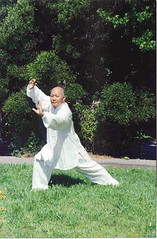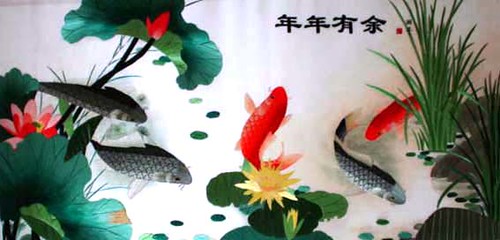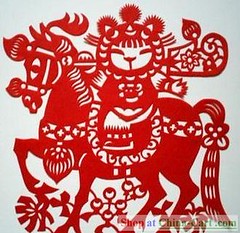| Home > Living in China > Kungfu |
Knowledge about Sun-style Tai Chi Quan
 |
|
Practising Tai Chi |
Besides the above-mentioned five style of Tai Chi Chuan, there is another style called Five-Star Tai Chi. This style was initiated by Wang Lanting, butler of Prince Duan of Yang Luchan who served as Wushu master to Prince Duan. After mastering the Chuan art, Wang Lanting passed it onto Li Ruidong and Si Xingsan. Li Ruidong then absorbed the cream of other styles of Tai Chi to form the Five-Star Tai Chi.
The Chanmen Tai Chi Quan or Buddhist Tai Chi Quan which is popular in the area of Pingdingshan in Henan Province was developed by monks in the Shaolin Temple according to the Infinitely Merciful Dharani Scripture. By the end of the Qing Dynasty, it had also absorbed the best of the martial arts practised by followers of Taoism and Confucianism. As it was first created by Buddhist monks, it was called Chanmen or Buddhist Tai Chi Quan.
To further popularize Tai Chi Quan among the people after the establishment of the People's Republic of China, a simplified set of the Yang-style Tai Chi Quan was compiled in 1956, by dropping the repeated and difficult movements. The simplified set consists of 24 forms. In 1979, the Chinese State Physical Fxiucation and Sports Commission absorbed the strongest points from the Chen-style, Yang-style and Wu-style Tai Chi, as well as Tai Chi Wushu, to form a popular, 48-form Tai Chi Quan.
Source: Kungfu
Art
 more
moreIntroduction to Suzhou Embroidery
Suzhou embroidery-one of China's four famous embrodiery styles, has a

Local Styles of Paper-cuts in China
Daisy Though making of paper-cut is simple, its

Origin and Development of
Chinese paper-cuts As one of the most popular folk

Customs
 more
more



 print
print  email
email  Favorite
Favorite  Transtlate
Transtlate 
